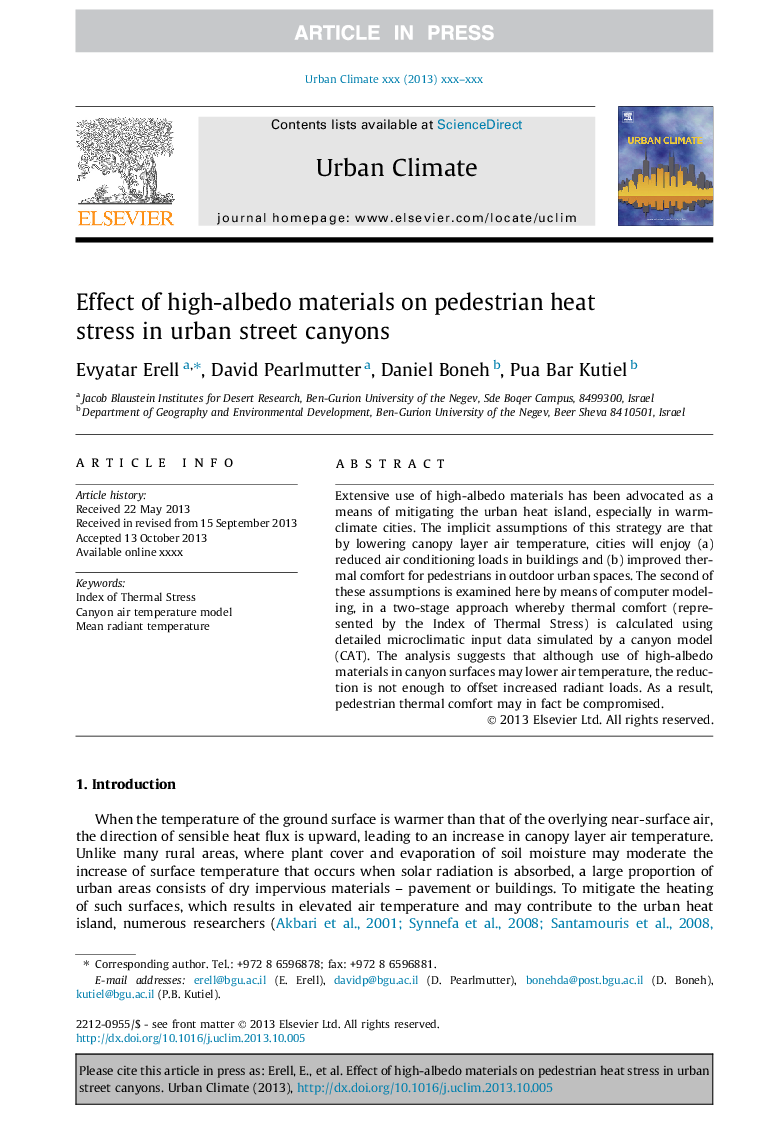| Article ID | Journal | Published Year | Pages | File Type |
|---|---|---|---|---|
| 10260296 | Urban Climate | 2014 | 20 Pages |
Abstract
Extensive use of high-albedo materials has been advocated as a means of mitigating the urban heat island, especially in warm-climate cities. The implicit assumptions of this strategy are that by lowering canopy layer air temperature, cities will enjoy (a) reduced air conditioning loads in buildings and (b) improved thermal comfort for pedestrians in outdoor urban spaces. The second of these assumptions is examined here by means of computer modeling, in a two-stage approach whereby thermal comfort (represented by the Index of Thermal Stress) is calculated using detailed microclimatic input data simulated by a canyon model (CAT). The analysis suggests that although use of high-albedo materials in canyon surfaces may lower air temperature, the reduction is not enough to offset increased radiant loads. As a result, pedestrian thermal comfort may in fact be compromised.
Keywords
Related Topics
Physical Sciences and Engineering
Earth and Planetary Sciences
Earth and Planetary Sciences (General)
Authors
Evyatar Erell, David Pearlmutter, Daniel Boneh, Pua Bar Kutiel,
